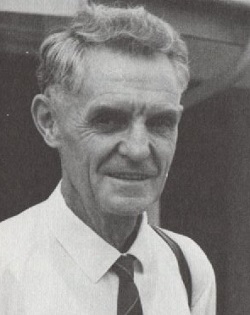1970 Solomon Islands Revival
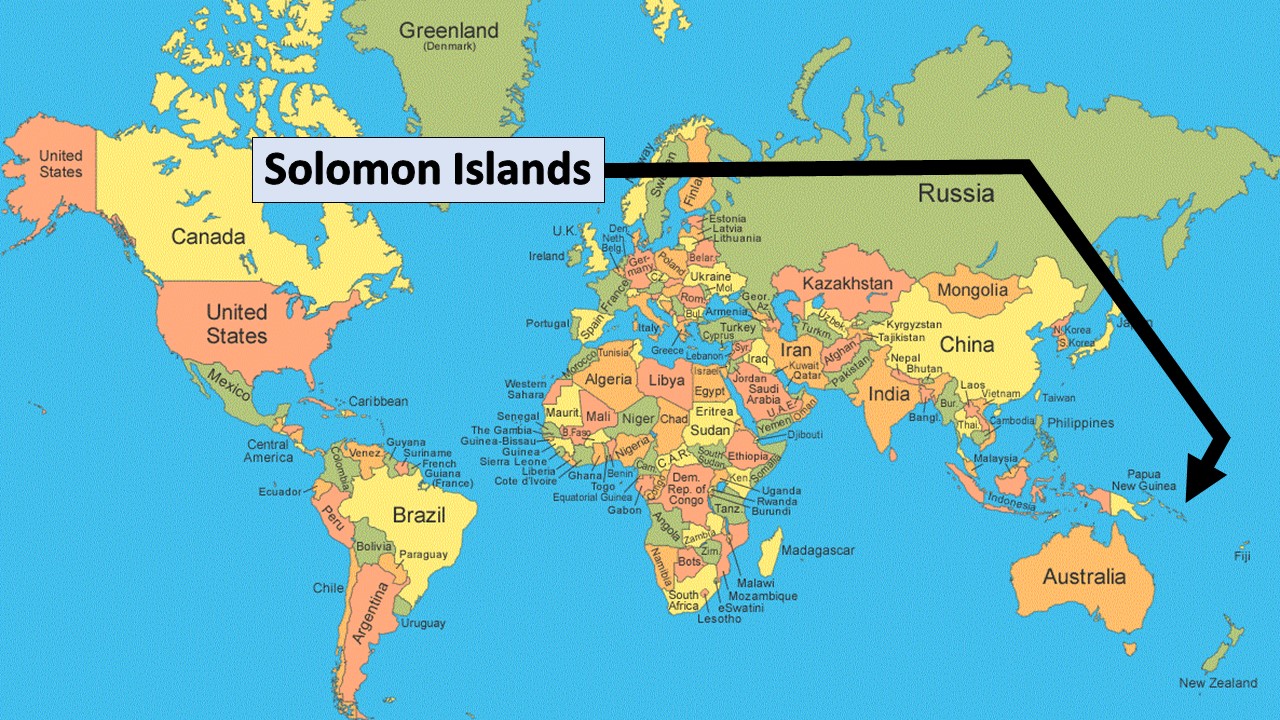

Suggested Preliminary Reading
To gain historical perspective on the 1970 Solomon Islands Revival, we highly recommend starting with:
► 1905-1906 Queensland Kanaka Revival
► 1936 Solomon Island Revival
Background to this Revival
The 1970 Solomon Island Revival was profoundly influenced by the 1905-1906 Kanaka Revival, which involved the Queensland Kanaka Mission, which later evolved into the South Sea Evangelical Church (SSEC), alongside its missions arm, the South Sea Evangelical Mission (SSEM).
Though that 1905 revival occurred 65 years earlier, its memory and reports of it left many islanders and missionaries with a deep longing for a fresh encounter with God. Their desires and prayers were fulfilled in 1970 when revival once again visited the Solomon Islands.
Extraordinary Prayer
In 1970, the SSEC consisted of around 300 churches. These churches occasionally organized conventions and crusades with good speakers, and while people would respond with confession and repentance at these meetings, the results often lacked lasting impact.
Missionaries and Islanders increasingly prayed for God’s reviving power to bring about permanent transformation in lives.
For over a year prior to the revival, there was a strong commitment to prayer. During these prayer gatherings, a genuine spirit of prayer would come upon those assembled, resulting in “united prayer”—a form of compulsive praying where everyone prayed simultaneously.
In July and August of 1970, a three-member Māori evangelistic team from New Zealand, led by evangelist Muri Thompson, accompanied by singer John Pipi and guitarist Rex Tito, was invited to conduct crusades throughout the Solomon Islands.
In anticipation of this New Zealand team’s visit, the SSEC sent out a letter in April 1970 to their nearly 300 churches. The letter read:
Muri Thompson, a Māori evangelist from New Zealand, will be here for a number of crusades during July and August … Have your people pray every day … Now is the time to start praying. What should we pray for? Revival, a mighty pouring out of God’s Holy Spirit upon His people so that people from all churches and missions will be eternally built up in Christ… God is sick of this “getting right” for a little time and then drifting back into sin. Let us pray that in these crusades lives will be changed forever.
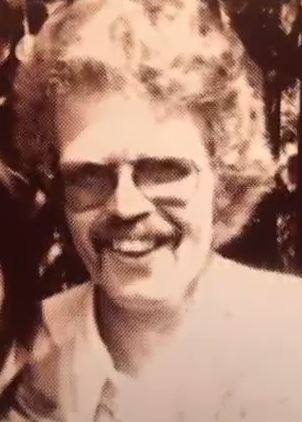
Jan Pasterkamp
Visit by Dutch Pentecostal Pastor, Jan Pasterkamp
Before the New Zealand evangelistic team’s visit, Jan Pasterkamp, a Dutch Pentecostal missionary based in Rabaul, Papua New Guinea, visited the island of Malaita from June 16 to August 2. It was during this ministry visit that the revival erupted on Malaita.
Pasterkamp’s visit was in response to an invitation from an SSEC church in the village of Kakara, located on the northwest coast of the island. The congregation extended this invitation because they wanted to learn more about the Holy Spirit and spiritual gifts.
Upon arriving in Kakara, Pasterkamp spent every morning teaching the congregation how to receive the baptism in the Holy Spirit. Within a week, approximately 100 members of the church:
► Had visions of Jesus
► Spoke and sang in tongues
► Cast out demons
► Prayed for and witnessed miraculous physical healings
This Pentecostal teaching and accompanying displays of power became the catalyst for the revival that was about to spread throughout the Solomon Islands. This group of believers from Kakara, who were baptized in the Holy Spirit, later became part of the New Zealand crusade teams.
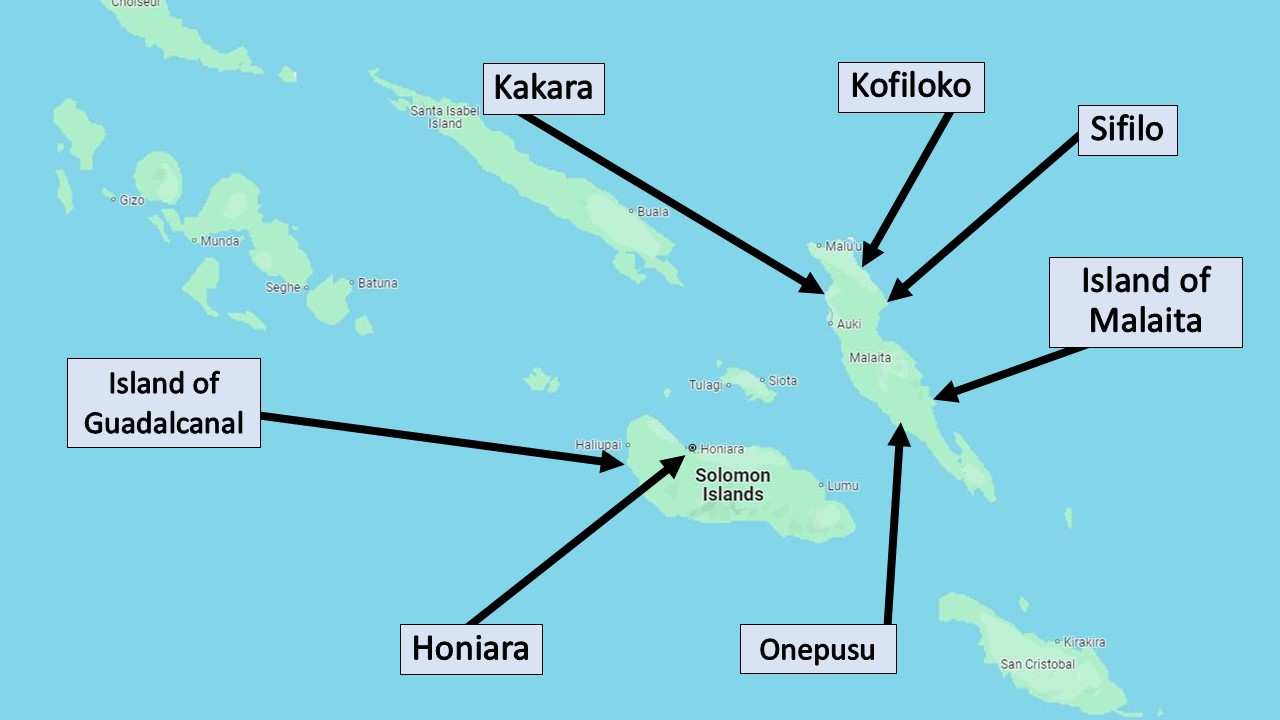
Locations mentioned in this account
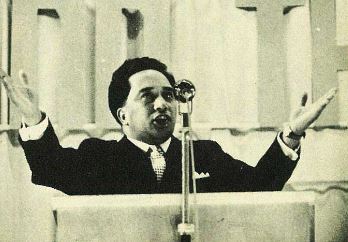
Muri Thompson
Māori Team from New Zealand
Most sources documenting the Solomon Islands Revival attribute its origin to the evangelistic crusades led by Māori evangelist Muri Thompson in July and August 1970. However, as previously mentioned, the foundational ministry of Jan Pasterkamp played a crucial role in the revival’s success.
The New Zealand team’s initial ministry in the islands began in Honiara, the capital city of the Solomon Islands. Accompanied by a team of Christian leaders, they visited centers across the islands. During July, they held revival meetings throughout different parts of the country, but they did not see the breakthrough they had been praying and hoping for.
Onepusu Mission Conference
During the first week of August, the ministry team was in the town of Onepusu, on the island of Malaita. It was there, at the SSEC Bible school, that an annual Mission Conference was held, and Thompson was invited to be the speaker. This conference was attended by indigenous leaders, as well as foreign Christian leaders and missionaries. It was during this conference that the crusades took on a completely different atmosphere.
As Thompson preached during this conference,
One man present broke down and cried and cried, utterly broken before God, confessing sins of bitterness, animosity, and resentment.
God convicted missionaries and Island leaders of wrong attitudes, resentful thoughts, hurt feelings, jealousies, and other sins of the spirit which had been hindering unity and crippling God’s work, in some cases for years. They confessed openly, and asked forgiveness of God and of each other in true brokenness.
A missionary present, Gordon Wilson, wrote:
There is no more shattering experience than to be humbled to the dust in public, in an agony of sin and failure, but what joy and praise follows the release of the burden.
Unity Among the Believers: A Cleansing Work
During this Onepusu Missions Conference, many of the strained relationships between missionaries and national workers were restored. It became evident that this disunity had been the spiritual barrier preventing revival.
Fresh Fire for the New Zealand Team
With the prevailing unity among the believers, the evangelistic effort began to produce similar results at every location, mirroring what was witnessed at the Onepusu conference.

Evangel: The mission boat that transported the evangelistic team
Revival Fire in Kofiloko
During a church service on Sunday morning, August 23, the revival efforts reached a fever pitch at the town of Kofiloko.
That morning, while most of the evangelistic team was still on the boat at the beach, an entire congregation of 600 was deeply engaged in prayer and worship. Many were moved to tears during this time.
George Strachan, who was part of the team that came from the ship Evangel that morning, gave this report upon witnessing the prayer gathering:
Many were crying, and leaders were disturbed that they could not stop it. There appeared to be no real cause, yet their distress was real. The church was full of concerned faces. But a spirit of relief came when we explained that this was godly sorrow for which we had been praying for years. Those crying were taken to a separate building and the meeting commenced. When we explained to those crying that they could accept God’s provision by faith, there was a change and weeping turned to great joy.
Following Thompson’s sermon that morning, he invited people to come forward, and the entire congregation of 600 rushed forward, over the dirt floor under the thatched leaf roof. Most everyone, including the church leaders, were weeping loudly and repenting.
As they confessed and repented, the guilt of their sins was lifted, leading to powerful outbursts of joy, accompanied by various experiences:
► Some saw visions of God on His throne.
► Some had visions of Jesus on the cross.
► Some saw angels, or a very bright light.
► Some spoke in tongues.
► Some received physical healing.
► Some were casting out demons.
► Many felt a deep need for humility and increased sensitivity to the Holy Spirit.
John Pipi, the Māori singer who was part of Thompson’s ministry team, gave this report about the ministry in Kofiloko:
I slept on an island sleeping mat in the thatched pulpit of the Kofiloko Church under a mosquito net. During the night and early morning, one grew accustomed to the islanders’ times of prayer — praying always — praying aloud, especially early in the morning from three o’clock onwards. Twice my night’s rest was disrupted by people whimpering and crying out under demon possession.
Ministry at the Village of Sifilo
On Thursday, August 27, the New Zealand team arrived at the village of Sifilo on the eastern coast of the island of Malaita. Though the village had only 150 residents, others came from far away—on foot and by canoe—bringing the number assembled to 2,000.
The ministry team discovered that the Holy Spirit had already been at work for several weeks before their arrival, convicting people of sin, leading them to repentance and reconciliation, and giving them an intense desire to be filled with the Holy Spirit.
At the conclusion of Thompson’s sermon on this day, he invited the congregation of 2,000 to pray silently. In the ensuing silence, he heard a sound:
At first, I thought it was audible prayer among the congregation, but realized it was above, in the distance, like a wind, and getting louder. I looked up through an opening in the leaf roof to the heavens from where the sound seemed to be coming. It grew to be a roar— then it came to me: surely this is the Holy Spirit coming like a mighty rushing wind. I called the people to realize that God the Holy Spirit was about to descend upon them.
At the same time, three men in a nearby house heard the silence, followed by the roar. They went outside and recognized that the sound was coming from directly above the church.
George Strachan, who was present inside the church, reported what happened next:
In a matter of seconds, the silent church started to echo with wailing, praying and strong crying. As the leaders gave praise aloud, cries of conviction increased among the people. Gradually, they started to come through to deliverance. There was no panic; hardly anyone moved from his seat.
There was then a transition from wailing, crying, and powerful conviction of sins to freedom from those sins, and the resulting joy with singing.
People began sharing what they had just experienced:
► Physical healing
► Deliverance from demons
► Marriages restored
► Rebellious young people transformed
► A fresh hunger for God emerged
► Greater sensitivity to the Holy Spirit
► Lives began to be lived honestly, with God and one another
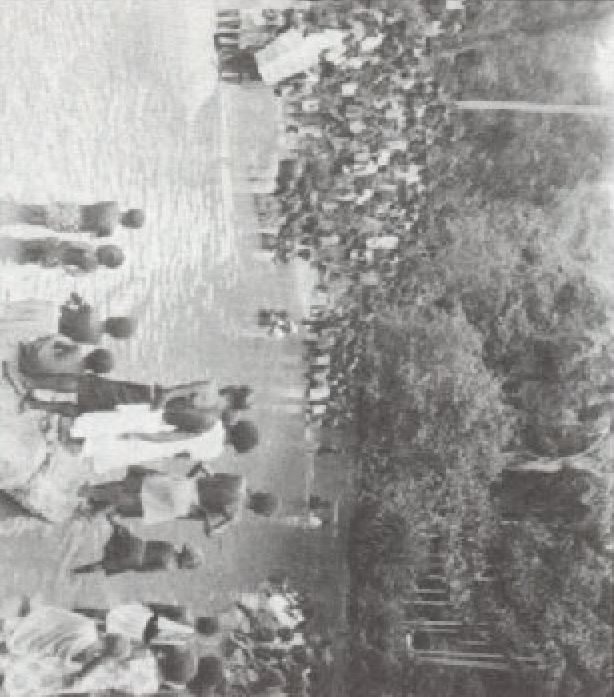
Water Baptisms
Typical Pattern
The revival followed a typical pattern at every location where ministry was conducted. The conviction, followed by repentance, was so powerful that it often seemed as though people were on the verge of dying. However, once forgiveness was received by faith, an overpowering joy ensued, as described in this report:
All was in order till the call was given after the message. Then there was a surge forward, and many broke into strong crying, both men and women. They were left for perhaps ten minutes then outbursts of joy and praise began. This spread over the whole meeting and continued for another fifteen minutes. It was tremendous, such as I have never seen or heard in all my life. Towards the end of the meeting, a number of schoolgirls were dancing with joy and praising the Lord outside the church. You couldn’t help but recognize they had a joy beyond themselves.
Revival Spread to the Schools
Teachers reported that class time was often interrupted by the power of conviction falling upon the children, followed by repentance, and ultimately overwhelming joy. The visions and trances these children experienced were so powerful that they led them to evangelize other children. One teacher reported on this movement in the schools:
All are praising God, singing choruses of praise and flooded with joy. In this part of the world they all sing with movement—waving their hands and beating time. It just seems suitable. They are so full of joy and love for the Lord and for others that they cannot contain themselves and tell of Him to all they meet.
New Zealand Team’s Departure
After Muri Thompson and his team left the Solomon Islands, teams of believers began traveling to locations throughout the islands. Wherever they went, the power of the Holy Spirit accompanied them.
Ongoing Revival at Onepusu Bible Institute
In September, Ed Nash, the Principal of the Onepusu Bible Institute, wrote:
For the last four weeks we have not had a regular school. Lectures have been interrupted simply by the Spirit taking over. … One of our own missionaries has reported to New Zealand that Muri Thompson has introduced Pentecostalism. All I can say is that we need more of it and quickly.
Results of the Revival
Here are some of the impacts of this revival:
► As the revival matured, there was a growing emphasis on individual and congregational prayer. This led to a significant increase in prayer within the churches.
► A deep hunger for the Word of God developed.
► New Bible schools were established.
► Large quantities of witchcraft fetishes were destroyed.
► New passion and zeal led national church leaders to take on responsibilities that they had previously depended on the foreign missionaries to shoulder.
► Teams began to travel throughout the Solomon Islands, and to other nations, with revivals breaking out in many locations.
► In addition to the SSEC churches, the Methodist churches (now the United Church) also experienced strong revivals. These revivals led to the development of many independent churches.
Primary Sources
► Evangelical Awakenings in the South Seas by Edwin J. Orr
► Fire in the Islands by Alison Griffiths
► Melanesia Burning by Fraser MacDonald
► Revival – its Blessings and Battles: An Account of Experiences in the Solomon Islands by George Strachan
► Wine of God: Revival in Indonesia, Formosa, Solomon Islands, and South India by Kurt Koch
…Online copy of: Wine of God by Kurt E. Koch
Secondary Sources
► Pearls from the Pacific by Florence Young
► Florence Young and the Kanakas by Christian Today
► Jan Sjoerd Pasterkamp by Prabook.com
► Jan Sjoerd Pasterkamp by Wikipedia
► What Will it Take to Bring Revival by Canberra Declaration
Return to List of Revival Stories
Chet & Phyllis Swearingen:
Office: (260) 920-8248
romans1015@outlook.com
Beautiful Feet
P.O. Box 915
Auburn, IN 46706

